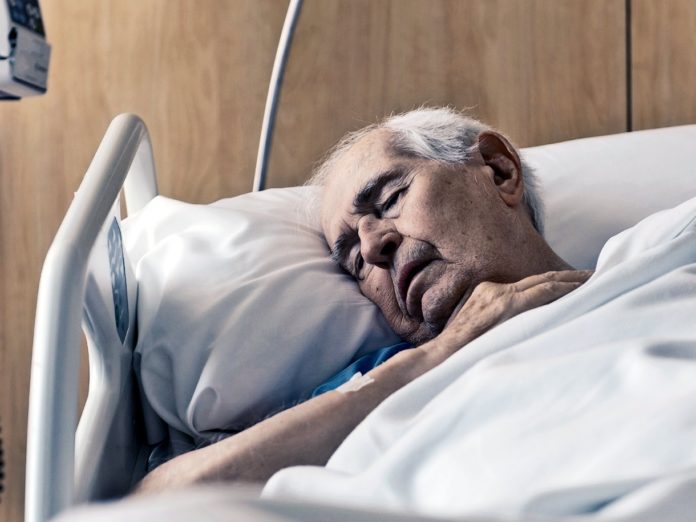COVID-19 deaths in long term care centers and nursing homes has reached well-over 1,000 people in Minnesota—a staggering number compared to other states. In Minnesota, over 80% of the state’s COVID-19 deaths have occurred in long term care facilities, the highest percentage in the country. That compares to under 60% in Iowa, and about 40% in Wisconsin, for example.
Because of the added deaths in Minnesota nursing homes, Minnesota has the highest death rate per capita compared to any neighboring state. And due to Governor Walz’s heavy-handed approach compared to other neighboring states, Minnesota also has the highest unemployment rate compared to any neighboring state.
The tragedy of Minnesota’s high nursing home deaths is directly due to Minnesota Department of Health (MDH) policy to place COVID-19 patients in long-term care centers (LTCs).
The policy started in New York, where officials—fearing an overwhelmed hospital system—called for COVID-19 patients, once released from the hospital, but while still infectious, to be housed at LTCs. New York Democratic Governor Andrew Cuomo mandated that the LTCs take these patients. But as New York’s death rate spiked in LTCs, the policy came under heavy criticism. Essentially, it places sick patients right in the middle of an extremely vulnerable population, in centers potentially ill-prepared to control the spread of the disease.
To his credit, Cuomo’s government backed away from the policy in the face of criticism, and when the strain on New York City’s hospital system was reduced. Cuomo also incorrectly tried to say that he hadn’t ordered LTCs to accept COVID-19 patients, and incorrectly tried to blame the initial policy on the Trump administration.
A travesty in Minnesota
Minnesota was the only state in the nation to copy Cuomo’s policy, which explains the high nursing home deaths in both states. But where Cuomo’s government backed off such a policy, Minnesota has stuck to it.
What makes this decision by Governor Walz and MDH Commissioner Jan Malcolm especially odd is that Minnesota’s hospital system has never come anywhere near the strain that New York’s hospital system underwent. And Minnesota has had relatively few COVID-19 infections and deaths compared to what took place in New York City during March and April.
That has Minnesota politicians, including State Sen. Karin Housley (R-St. Mary’s Point) asking questions. She’s also highlighted episodes of botched testing, where the MDH shoved the wrong swab through elderly persons’ noses—the swab was bigger and thicker, causing pain, and the tests ended up being compromised and thrown out.
Housley wants a full Senate hearing on the problems at MDH, and has threatened to subpoena documents from the MDH. So far, the MDH has resisted releasing all the data that Housley and other Republicans have requested. MDH released nursing home data, but not yet data on assisted living.
MDH responds
MDH has responded to Housley in a letter, claiming that she and others are mischaracterizing data on COVID-19. MDH’s letter claims that Wisconsin data, for example, does not include deaths from other assisted living centers. Yet even media reports friendly to the MDH, and critical of Housley, have assessed the MDH’s claim to be incorrect—Wisconsin’s number of deaths does in fact include deaths from other assisted living centers.
While it is possible that strictly-defined nursing home deaths in Minnesota are comparable to other neighboring states, when looking at all long-term care and assisted living deaths, including memory care centers, Minnesota does indeed appear to have a much higher death count compared to neighboring states.
Where’s the outrage?
Republican politicians aren’t the only ones applying pressure. Minnesota Citizens Concerned for Life has called on MDH Commissioner Jan Malcolm to resign, and high-ranking Republican Congressman Steve Scalise (R-La.) is attempting to launch a Congressional investigation into the matter.
Minnesota’s media outlets, especially a few local news stations, have also begun to pick up on the story. Yet there is incredibly little coverage of the MDH policy—modeled on New York’s failed policy that was already reversed in that state—that appears to be causing this problem in the first place. And there’s incredibly little outcry over an ongoing policy that appears to be needlessly causing the deaths of a vulnerable group in Minnesota.
One potential proponent of the current policy, though the advocacy for it is not being done in public, may be Minnesota’s large hospital chains. Often, due to billing and cost reasons, they are eager to not keep a disabled or elderly patient, insured by a government plan that potentially under compensates, in quarantine at the hospital. Hospitals also have a close relationship with Governor Walz, and large providers tend to donate disproportionately to Democrats, in both Minnesota and nationally.

















